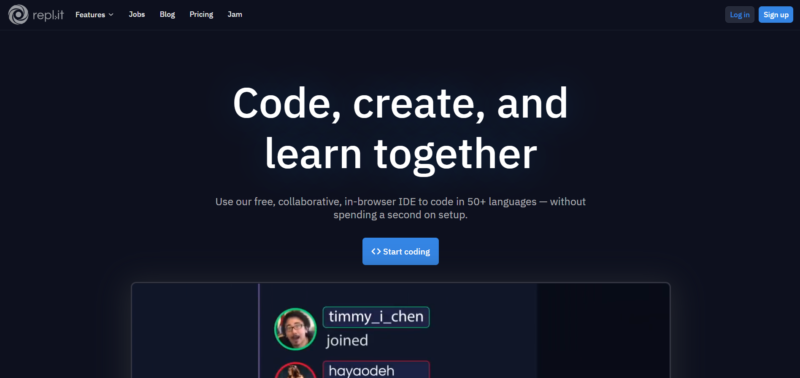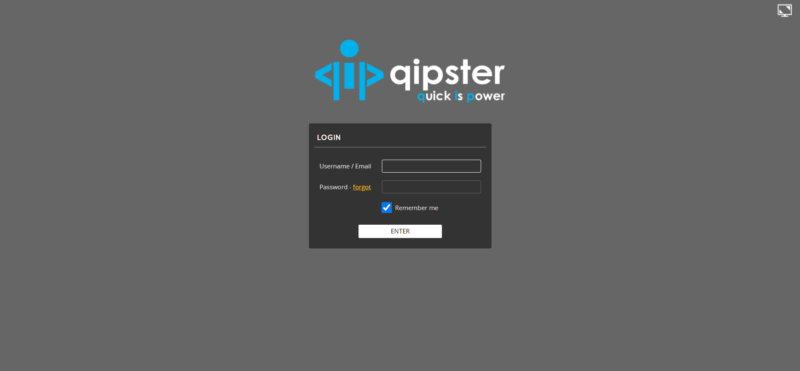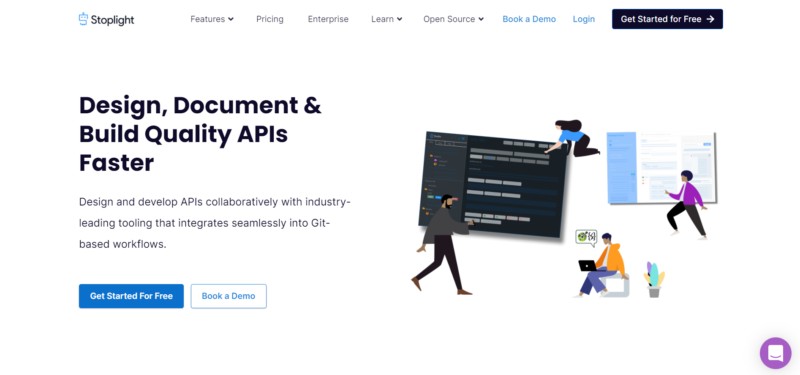Innovative Tools for Software Teams: Coding, Debugging, and More
To keep up with IT innovation, developers depend more than ever on tools to make their work easier. From system documentation and implementation to testing and debugging: a presentation of innovative solutions for productive software teams.
Simplifying Software Development
Teams face a wide variety of tasks during all phases of software development. Before even the actual software implementation, you should measure your candidates programming skills, as well as create software documentation and graphical models must be created. Describing data structures, system architecture, or application scenarios. As soon as you start writing code, unavoidable bugs in software development will arise. Therefore, teams can manage them efficiently and systematically. In order to discover bugs as soon as possible, testers should be involved in the development process from an early stage. For this, it is necessary to automate deployment and testing processes. And avoid waiting in front of the computer for a new available release for QA or beta testers.
To successfully cope with these and other challenges, software teams depend on professional solutions to accelerate their development work. By using the right tools and solutions, developers can recoup valuable time. So, they can invest in more important tasks that create real added value for the user. Such as an intuitive and visually appealing user interface, a well-thought-out user experience, and, above all, useful functionalities. Below, we introduce innovative cloud tools used by productive software teams around the world.
Focus on Code Collaboration
When it comes to innovative solutions for software developers, there is no getting around GitHub (Microsoft), BitBucket (Atlassian), and GitLab. Simple code repositories emerged about ten years ago. And have now become powerful “code collaboration” platforms where software teams can work together efficiently. Including release management, issue tracking, project and team management, code reviews, and more. And optimally covering all core aspects of efficient collaboration between development teams.
However, in recent years, GitHub and Co. have also expanded. They include modern DevOps tools for continuous delivery and integration, to automate the build and deployment processes. This allows developers to work together centrally on a single platform throughout the entire development process. From idea and first prototype to automated deployment of upgrades in production.
Simple code repositories emerged about ten years ago. And have now become powerful “code collaboration” platforms where software teams can work together efficiently.
The only thing that developers cannot do on these platforms is actually code. But that too should change soon. Microdoft acquired GitHub in 2018 for 7.5 billion dollars. And has recently introduced GitHub Codespaces, a cloud-based development environment.
The product, currently available in a limited public beta, offers a full browser-based code editor (based on Microsoft’s Visual Code). As well as additional tools to easily manage dependencies, for example. So, GitHub is competing with other cloud-integrated development environments. These should eventually replace Eclipse, Visual Studio, Netbeans, and the classic PC-era IDEs.
Development Environments Integrated into the Browser
With the triumphant advancement of cloud computing and SaaS, cloud IDEs have recently become increasingly powerful. And therefore, increasingly popular with developers. One of the pioneers in this area is Cloud9. Founded in San Francisco in 2010, and acquired by Amazon Web Services in 2016. It is a modern, feature-rich development environment. It supports popular programming languages and can be seamlessly integrated with other AWS services. This allows software developers to manage, test, and deploy their projects in the browser. The code editor provides syntax highlighting and autocompletion for many programming languages that are widely used in web development, including Javascript, Node.js, HTML, PHP, Ruby, and Java. Another benefit of the solution is that developers can easily deploy their applications on AWS.
Repl

Repl is a promising Cloud9 alternative also developed in San Francisco. The startup from Y Combinator has convinced the software teams of the major players in the industry. Such as Facebook, Google, and Stripe. As well as top investors such as Andreessen Horowitz. Repl is an ambitious all-in-one solution. It allows developers to write, test, and deploy their code in the browser. And supports over 50 programming languages, and offers numerous integrations with GitHub and other popular systems. This modern cloud IDE can also convince with a number of useful collaboration tools. Coders can work together efficiently on the same code file at the same time. Similar to Google Docs and useful for pair programming. Also comment on code snippets, and communicate with one another using the integrated chat module.
Qipster

When it comes to Qipster, web designers and developers should work closely together, on a single platform in the cloud. The Italian startup brings together numerous design and development tools under one roof. With the integrated code editor, for example, developers can edit HTML, CSS, JavaScript, and PHP files in the browser. A visual WYSIWYG editor also allows them to create websites using drag & drop. They can optimize these with the help of different views and useful preview functions for desktop, tablets, and smartphones. Designers can also access an integrated image processing tool.
Other interesting IDEs that work completely in the browser are Codeanywhere, Glitch, Codenvy, and Eclipse Che, which works on the basis of Kubernetes.
Another module for digital asset management allows them to manage images, fonts, color palettes, and other project resources in a central location. This tool provides developers with a full-fledged code editor, specially designed to work with PHP and JavaScript. And has the usual features of a modern editor, such as syntax highlighting or function overviews. The backend team can also fall back on an built-in database manager. It enables connection and administration of relational database systems. They can create new databases, manage tables, and edit entries.
Design, Documentation, Testing and More
The topic of collaboration plays an increasingly important role in software development. And not just in pure programming, also in the areas of design, documentation, and testing. Solutions that focus on efficient collaboration are gaining acceptance. One of the best examples of this is definitely Postman. It is a popular cloud-based collaboration platform for API development. More than half a million software teams around the world are using it, according to the provider. The Silicon Valley startup has so far secured more than 200 million US dollars from well-known donors.
As an “integrated API development environment”, Postman provides all the tools you need to design, document, test, and debug APIs with your team. Users can create endpoint specifications, save them in a central location, and manage them as a team. With the built-in HTTP client, the API endpoints can be conveniently tested at the same time. For a better overview, they can group server requests into collections and folders. And easily edit and save request parameters using a form, such as individual header and authentication parameters. Convenient: Developers can create different server environments and define global environment variables that can be reused in individual API calls. So you can easily test your code in the test environment, in QA, or in production.
Stoplight

Stoplight is an interesting alternative to Postman. It’s not that popular but it makes a good impression with a modern user interface and useful functions. The tool is based on the OpenAPI standard for consistent API specifications. Like Postman, these are used as the basis for creating API documentation and for automating testing processes. Another useful feature is mocking. Based on the endpoint specifications, a virtual server is started, returning a response in the specified format to queries without having to implement business logic in the backend system.
In this context, frontend developers can start integrating new API resources right away, test them thoroughly, and iterate more quickly. Another handy feature: with one click, Stoplight automatically generates the API documentation. They can then publish it on the web to serve as a portal for developers. Therefore, the software replaces best-of-breed tools in the area of software documentation, such as readme and redocly. With SwaggerHub and Insomnia, there are also two other promising solutions that compete directly with Postman and Stoplight.
Real-Time Fault Monitoring
There is no software without bugs. The secret of leading software manufacturers is much more to identify and fix those bugs quickly before users discover them. In the best case scenario, teams identify bugs in the test environment or during QA analysis. So users don’t even notice them. But too often, bugs go unnoticed on public release, no matter how thoroughly you’ve tested your code. So it is important to identify and fix them as quickly as possible, before they affect too many users. Professional bug monitoring tools like Sentry or Rollbar are essential for this task.
With these modern cloud services, developers can monitor bugs in real-time. They can easily set up solutions with just a few lines of code and get them ready to go immediately. Highlight: vendors provide native SDKs (Software Development Kit) for almost all frameworks, platforms, and programming languages that make it easy to get started. After integrating the corresponding library into their project, they just need to modify the error handling code to send the error logs to Sentry or Rollar. If an error occurs in production, it is immediately displayed on the online dashboard. Detailed reports are available here to provide critical information for error analysis, prioritization, and handling. Where exactly in the code does the error occur? How many times has it performed since the last release? How many users are affected? Sentry and Rollbar can quickly answer these questions.
Why Developing Software with Innovative Tools?
Entry barriers to the software market are now lower than ever. But commercial software development, regardless if whether it has hundreds or millions of users, remains a technical and organizational challenge. To master this, software teams depend more than ever on innovative tools. Tools that allow them to accelerate their daily work at every phase of a software project. As we have shown in this article, the topic of collaboration is increasingly coming to the fore in all core aspects of software development. From system documentation to programming and testing. By optimizing their collaboration, software teams can focus on the essentials: developing great features and an excellent user experience.
Postman provides all the tools you need to design, document, test, and debug APIs with your team and Stoplight is an interesting alternative.
Sentry and Rollbar allow developers to monitor bugs in real-time. Easily set up solutions with just a few lines of code and get them ready to go immediately.